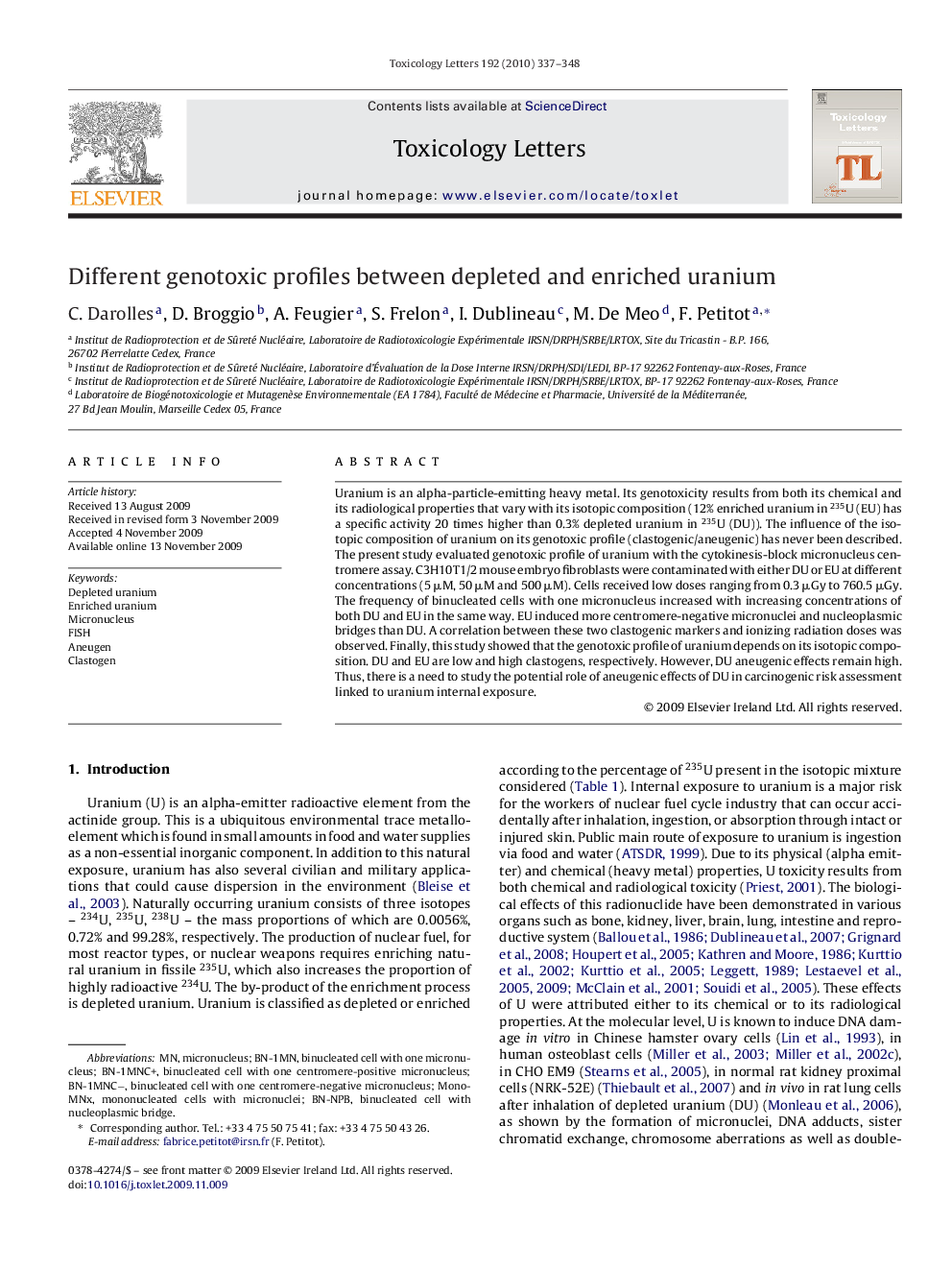| Article ID | Journal | Published Year | Pages | File Type |
|---|---|---|---|---|
| 2600649 | Toxicology Letters | 2010 | 12 Pages |
Uranium is an alpha-particle-emitting heavy metal. Its genotoxicity results from both its chemical and its radiological properties that vary with its isotopic composition (12% enriched uranium in 235U (EU) has a specific activity 20 times higher than 0.3% depleted uranium in 235U (DU)). The influence of the isotopic composition of uranium on its genotoxic profile (clastogenic/aneugenic) has never been described. The present study evaluated genotoxic profile of uranium with the cytokinesis-block micronucleus centromere assay. C3H10T1/2 mouse embryo fibroblasts were contaminated with either DU or EU at different concentrations (5 μM, 50 μM and 500 μM). Cells received low doses ranging from 0.3 μGy to 760.5 μGy. The frequency of binucleated cells with one micronucleus increased with increasing concentrations of both DU and EU in the same way. EU induced more centromere-negative micronuclei and nucleoplasmic bridges than DU. A correlation between these two clastogenic markers and ionizing radiation doses was observed. Finally, this study showed that the genotoxic profile of uranium depends on its isotopic composition. DU and EU are low and high clastogens, respectively. However, DU aneugenic effects remain high. Thus, there is a need to study the potential role of aneugenic effects of DU in carcinogenic risk assessment linked to uranium internal exposure.
